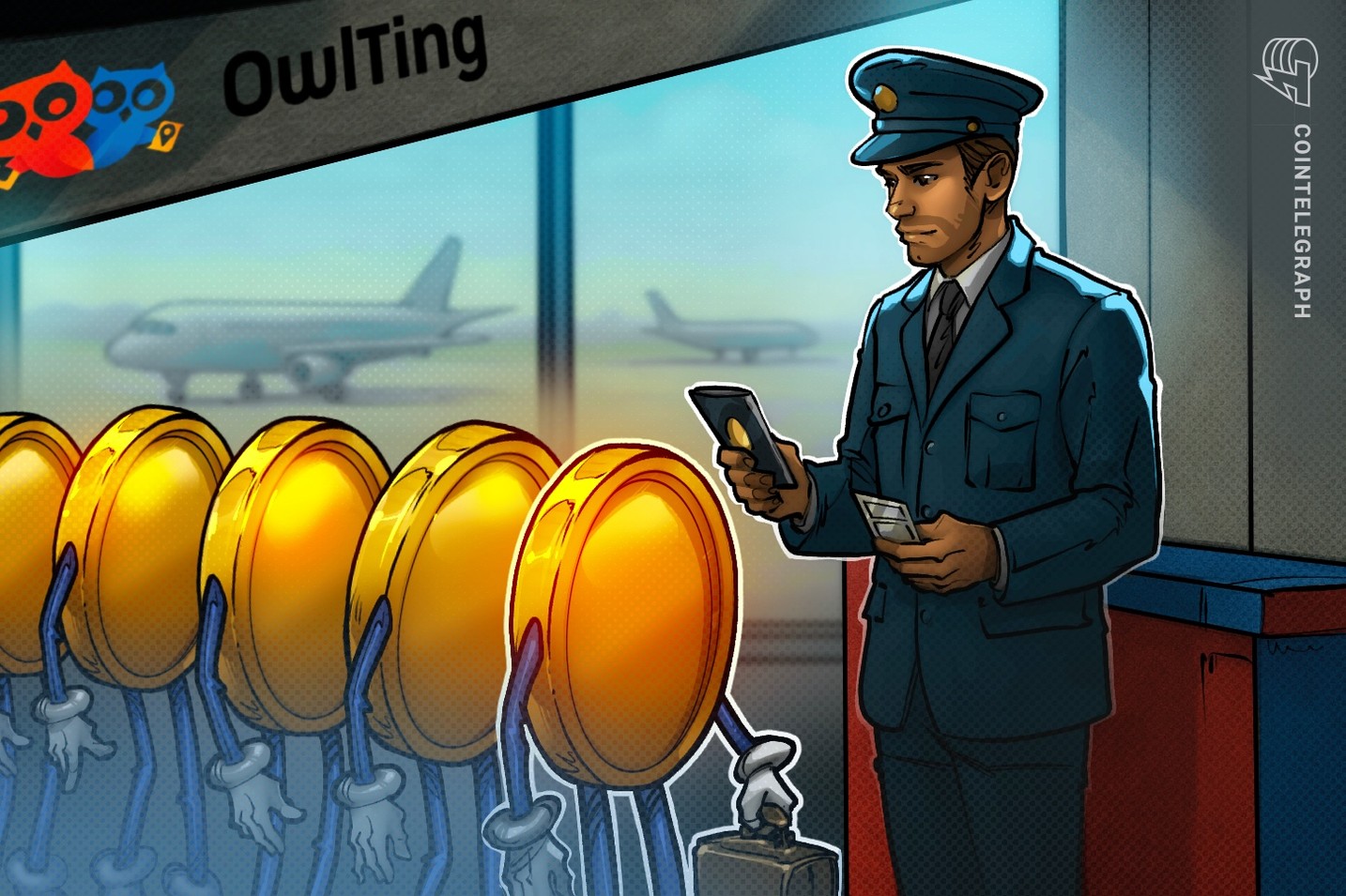Building the stablecoin infrastructure for the future: AMA with OwlTing
Building the stablecoin infrastructure for the future: AMA with OwlTing
In the wake of OwlTing’s listing on Nasdaq, founder and CEO Darren Wang joined Cointelegraph’s AMA to discuss the next chapter for OwlPay, the payments arm of the company.

The Nasdaq listing of OwlTing marked a milestone for the group as well as for its payments arm, OwlPay, which is building a fully licensed infrastructure connecting fiat and stablecoins. During a recent AMA, OwlTing’s founder and CEO Darren Wang outlined how the company’s years-long focus on regulation and compliance is paying off as global demand for stablecoin payments grows.
“We worked on this project for more than four years,” Wang shared. “Back in 2021, stablecoin licensing was almost a new concept. We had to design everything – from AML and KYC procedures to how funds move between fiat and wallets – before regulators even had a framework.”
AMA with OwlTing’s OwlPay on the Future of Global Payments [Brought to you by @OwlTing] https://t.co/alcbpA5SNH
— Cointelegraph (@Cointelegraph) October 17, 2025
Building a regulated bridge between fiat and stablecoins
OwlPay now holds licenses in 39 US states, along with VASP registration in Europe and regulatory approval in Japan – one of the broadest footprints in its category. The company is also pursuing additional licenses in Hong Kong, Singapore, and Latin America. This foundation enables the platform to facilitate compliant cross-border payments in over 190 countries and 41 currencies, in collaboration with global players such as Visa, MoneyGram, Stellar Development Foundation, Circle and Coinbase, strengthening OwlPay’s capability to bridge traditional finance with digital assets.
Wang emphasized that such partnerships and coverage are built on a single foundation, trust. “To handle money across borders, you need licensing and compliance built into your foundation,” he said. “Clients and partners won’t trust a company with their funds unless it’s regulated and accountable.”
He added that OwlPay’s extensive regulatory coverage was achieved by embedding compliance into the infrastructure rather than treating it as a separate layer. “We insist on opening business only where we’re licensed,” he said. “Many companies try to scale globally without local protection for customers. For us, regulation is the backbone of trust.”
The invisible rails behind global money flows
OwlPay was built with a clear goal: to make licensed infrastructure accessible to companies that need to move money globally. Securing regulatory approval across jurisdictions can take years and significant investment; by providing ready-to-use, compliant payment rails, OwlPay allows businesses to operate within a trusted framework while focusing on their own growth.
At its core, OwlPay functions as the “invisible rails” behind digital money movement. Its APIs and gateways allow enterprises to connect traditional banking systems with stablecoins across multiple blockchains, including Ethereum, Polygon, Solana, Avalanche, Arbitrum, Optimism and Stellar.
“Legacy systems like SWIFT rely on multiple intermediaries,” Wang explained. “Our API-driven infrastructure lets businesses convert between fiat and stablecoins instantly. By removing intermediaries, it eliminates costly processing fees and cross-border friction, while ensuring every transaction remains fully compliant.”
The company’s Stablecoin Checkout solution, which combines USDC stablecoin acceptance with USD fiat settlement, aims to reduce payment costs for merchants by more than 90%, compared to traditional credit card fees. Such fees typically hover around 4% per transaction, while stablecoin payments cost only a fraction of that.
Beyond Stablecoin Checkout, OwlPay’s platform supports a range of financial operations, including on/off-ramps between fiat and stablecoins, global payout and remittance services, transaction monitoring and enterprise-level KYC/AML integration. These capabilities allow enterprises, marketplaces, and financial platforms to move value seamlessly across currencies and jurisdictions under one regulated framework.
Compliance as a competitive advantage
Wang described compliance as one of OwlPay’s greatest differentiators. The company’s infrastructure embeds KYC, KYB and AML monitoring directly into its APIs, creating a standardized framework enterprises can adopt without rebuilding their own systems.
“In the past ten years, we’ve processed hundreds of millions in payments for hospitality and e-commerce suppliers, without a single incident,” Wang said. “That’s the moral standard we hold ourselves to. If you’re handling other people’s money, especially for SMEs, even one loss is unacceptable.”
He noted that obtaining and maintaining regulatory approval across multiple jurisdictions is an ongoing, complex process, one that requires years of groundwork, extensive legal coordination, and real-time adaptation to evolving policies. From the US Money Transmitter frameworks and Japan’s banking regulations to the EU’s MiCA and VASP/CASP regimes, each license demands a different approach to operational transparency, capital requirements and consumer protection.
“We design everything around compliance from day one,” Wang said. “Our clients don’t need to spend years applying for their own licenses or reinventing AML and KYC procedures. They can scale immediately using our infrastructure.”
What’s next for OwlPay
Following the Nasdaq listing, OwlPay plans to accelerate its product rollout, including debit and credit card on/off-ramps. Our goal is to make converting between stablecoins and fiat as seamless as using a debit or credit card, on/off-ramp globally. By integrating with Visa Direct, we’re building a bridge that lets users move funds across traditional and digital systems with the same ease and trust they expect from everyday payments.
The roadmap also includes the upcoming OwlPay Cash app for cross-border remittances, extending OwlPay’s reach into both consumer and enterprise use cases. Together, these products aim to make stablecoins as accessible as traditional money, whether for global enterprises managing payouts or individuals moving funds instantly through debit/credit cards globally.
“We’re building the backbone for every company that wants to enter the stablecoin economy,” Wang said. “Our goal is to make stablecoins as easy to use as swiping a card for both businesses and consumers, where sending money becomes as simple as sending a message.”
Looking ahead
As OwlPay deepens its network of global partnerships, its long-term ambition is to power the world’s financial internet – a seamless infrastructure where fiat and stablecoins coexist across borders.
By combining regulatory rigor with technological interoperability, OwlPay positions itself as the licensed foundation of a new financial era. “Just like semiconductor powers the world’s computing, we believe our stablecoin infrastructure will power the world’s money flows,” Wang concluded.
OwlTing’s direct listing on Nasdaq marks more than a corporate milestone; it is a signal that regulated blockchain infrastructure is entering the mainstream global economy.
Find out more about OwlTing
Disclaimer. Cointelegraph does not endorse any content or product on this page. While we aim at providing you with all important information that we could obtain in this sponsored article, readers should do their own research before taking any actions related to the company and carry full responsibility for their decisions, nor can this article be considered as investment advice.






